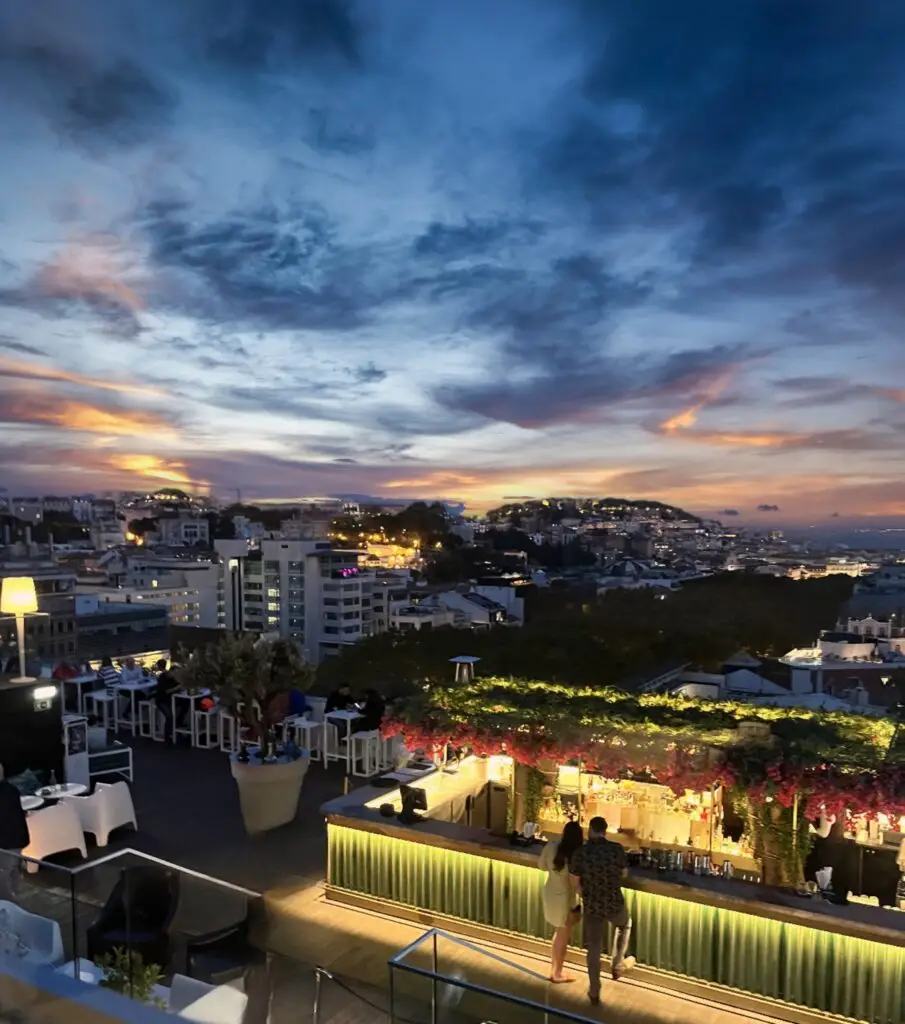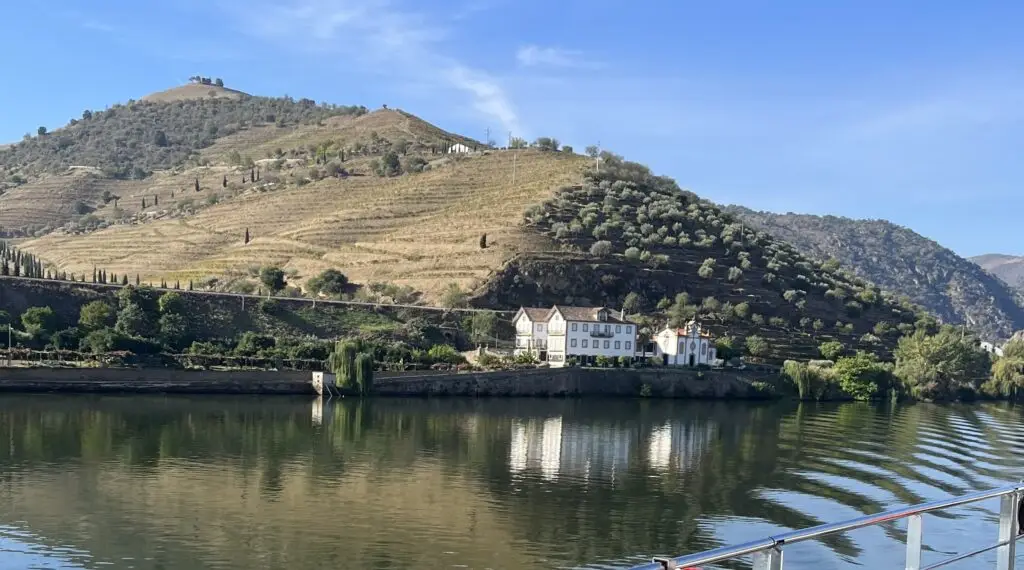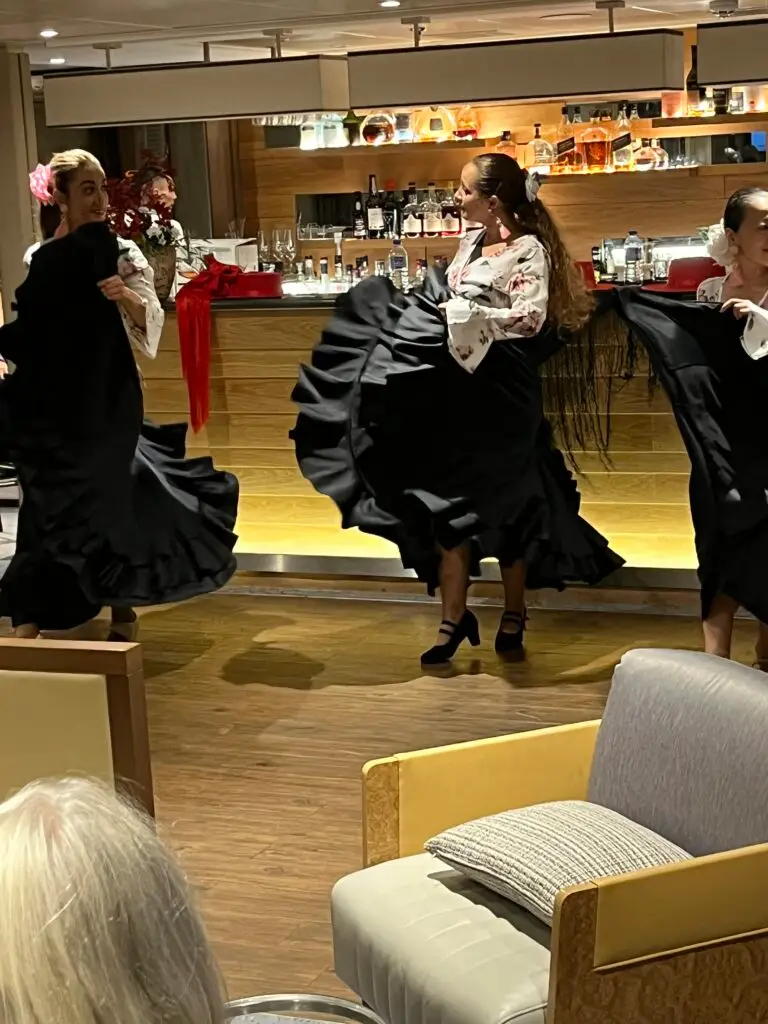Overseas Adventure Travel
Salamanca Spain
University District - Salamanca
Sometimes, getting up and walking away from the desk is a good thing. My trip to Portugal and Salamanca, Spain, gave me the perfect excuse to do that. We left our Viking River Cruise Ship in Barca d’Alva, Portugal, and traveled the almost two-hour bus ride to Salamanca one of the oldest cities. I got a profound sense of how old when our tour guide pointed out a bridge built by the Roman Empire during the first century.
Salamanca is known for its oldest University in Spain and has enormous tourism. A city famous for its sandstone structures. These magnificent buildings have a special glow when the sun is low in the sky. Even sidewalks are made of sandstone. We spent our time in the downtown area between Plaza Mayor and the University District close to Catedral de Salamanca. We started in Plaza Mayor, and while my wife went shopping for jewelry, I went into Café Novelty and ordered a ham sandwich and a beer. A local man there told me Novelty is the oldest café in the city.
Café Novelty - Salamanca

Café Novelty coffeehouse is in the heart of Plaza Mayor and started operating in the early 1900s. Back in those days, they told me, it was a much bigger place. Over the years, it had several owners and some famous clientele. But I found it a quaint local restaurant having that older look with its wooden chairs and small round tables. The waiter wore an apron. Orlando took a couple of minutes out of his busy day to take this pic with his bottle of Scotch and Kentucky bourbon. It’s nice to find bourbon far away from home.

We later walked south about a quarter mile from the plaza toward the University District. Along R. Mayor Street are pastry shops, Coca-Cola signs, souvenir shops, pizza, and restaurants with tables and umbrellas set up outside on the sandstone-tiled sidewalk. All situated in between those sandstone buildings the experience in Salamanca was exceptional. People were courteous, and most spoke English – to my relief. I was far from home and observing everyone acting as we do in the US. They were going about their lives, making it easy to realize we all are alike on this earth. Our tour group ended up at the University District – shown above, next to another magnificent landmark. The Catedral de Salamanca. The tour guide told us it took about 200 years to complete beginning in the 12th century.
One of Salamanca’s most notable landmarks is the Catedral de Salamanca, a blend of Romanesque and Gothic styles. This breathtaking cathedral is known for its intricate façade adorned with impressive reliefs and complex detail. Inside, visitors can admire the grand main hall and exquisite chapels. The Catedral de Salamanca is a testament to the city’s historical significance and architectural splendor, making it a must-see destination for those exploring this captivating Spanish city.


Lisbon, Portugal
Rossio Square at the South Fountain
The Rossio Square in Lisbon is a popular destination for both locals and tourists. It was named after Pedro IV, the former King of Portugal. The Column of Pedro IV, located at the center of the square, serves as a tribute to his reign. This is one of two fountains in the square. The square is situated about a mile away from our hotel, Tivoli, where we stayed before embarking on our river cruise.
Lisbon Arrival
We flew to Lisbon on a Sunday morning. Only the second time I left the US. It’s weird to leave at 11:30 p.m., and by 3:00 a.m., the sky looks like a sunrise. Landing in Lisbon at 5:40 a.m. watch time was 10:40 a.m. in Lisbon. Of course, the Apple watch changed to local time when I turned off airplane mode. Just as US inhabitants do, everyone in Lisbon had their faces stuck against the off-limits space between the phone and their nose.
I was surprised to see signs in English but relieved they were there telling me where to walk – to get through Customs. Now it’s all about face recognition – insert the passport into a machine, then look at the mirror/camera. I wonder what Customs Agents do if alarms go off at one of those machines. None went off for me even though I shaved my beard months ago, but the passport still shows the old me. Then, a polite agent with POLICIA and a badge prominently displayed on his shirt – stamped our passports. After that, we were on our way to meet the Viking Cruise rep eagerly holding her sign to help us start our journey.
Before boarding the Viking Helgrim, we had a couple of days in Lisbon. Hotel Tivoli Avenida Liberdade was our part-time home until we went north to meet the ship. Tivoli is located at 185 Avenida da Liberdade, a little over a mile from the Tagus River and Sodre Pier. It’s in a significant part of the city, and I could write a book about everything in between.
We had dinner at SEEN Restaurant, after a Old Fashioned at Sky Bar – both on Tivoli’s top floor. A relaxing evening overlooking the city south to the river. It was a perfect night with all the city lights and pristine sky.


Douro River Trip

The olive and almond trees and vineyards from Porto cover countless hillsides. This river valley has endless landscapes and well-groomed estates. Years ago, these unique estates were built before the modern dams and locks system tamed the river. Quinta do Vesuvio is part of the Symington Family Estates. Their website indicates Vesuvio has 329 acres planted with vines. António Bernardo Ferreira purchased the farm in 1823 and four years later built the original winery that continues to produce the Vesuvio Port today.
Avessada Vineyard Excursion

Avessada Vineyard is a wine lover’s paradise in the heart of Portugal’s charming Douro Valley. This scenic estate, known for producing exceptional Portuguese wines, offers a glimpse into the country’s winemaking traditions and striking landscapes. It has terraced slopes adorned with grapevines that cascade down to the Douro River. It’s truly a breathtaking scene.
One of the standout features of Avessada Vineyard is its interactive approach to wine education. The estate hosts workshops and experiences that allow visitors to actively participate in wine making, from grape stomping to blending and bottling their own wines.
In addition to wine-related activities, Avessada also showcases the region’s cultural heritage. The vineyard houses a fascinating museum dedicated to the Douro Valley’s history and traditions, providing insight into the roots of Portuguese wine making.

The charming estate is a destination for those seeking both wine appreciation and an immersive cultural experience. With its stunning vistas and commitment to preserving local wine traditions, Avessada Vineyard is a must-visit for wine connoisseurs and travelers looking to savor the essence of Portuguese winemaking.
This excursion took us to Avessada for lunch, which featured several courses, including some appetizers, soup, main, and dessert. We had both red and white estate wines, and coffee was available with dessert. Towards the end of our lunch, we were pleasantly surprised by some musicians who joined us. The owner of the winery, Sr. Luis Boros, also came to meet us and shared some interesting information regarding the winery’s traditions.


Porto Portugal
The Rabelo Boat
As I heard it from a Porto local – before the railroad and maybe even a little bit after, the Rabelo Boat was the workhorse of the Douro River. They carried wine barrels destined for the market. The boats traveled upriver using their sails and, at times, harnessed oxen on the banks to pull them over the rapids.
Loaded with barrels, the Rabelo Boat would travel back downriver to the market in Porto. But progress put Rabelo boats out of business. The locks and railroad made the Rabelo obsolete. However, one day a year during the festival of St. John on June 24, the Rabelo Boat race brings back the nostalgia.
Trip Worth Repeating

This river trip begins and ends in Porto, Portugal. We rode on the Viking Helgrim, and everything onboard looked brand new. I wish I could have bartered for the espresso/coffee/cappuccino machine outside the dining room. I would have shipped it home. Our suite had two TVs, a sofa and two chairs, plenty of closet space, and a comfortable bed. We had a balcony outside the sliding glass door. We also spent much time watching the scenery on the top deck.
Porto, a captivating coastal city known for its historic charm, unique architecture, and rich cultural heritage. The city is blanketed with colorful riverside houses, intricate bridges, and a thriving wine scene, particularly for its world-renowned Port wine.
Portugal’s River of Gold is the Douro River. From Porto to Barca d’Alva. Barca d’Alva is the farthest navigable point for Viking. From there, Douro defines the border with Spain – northward to a hydroelectric plant and the Castro Dam.



